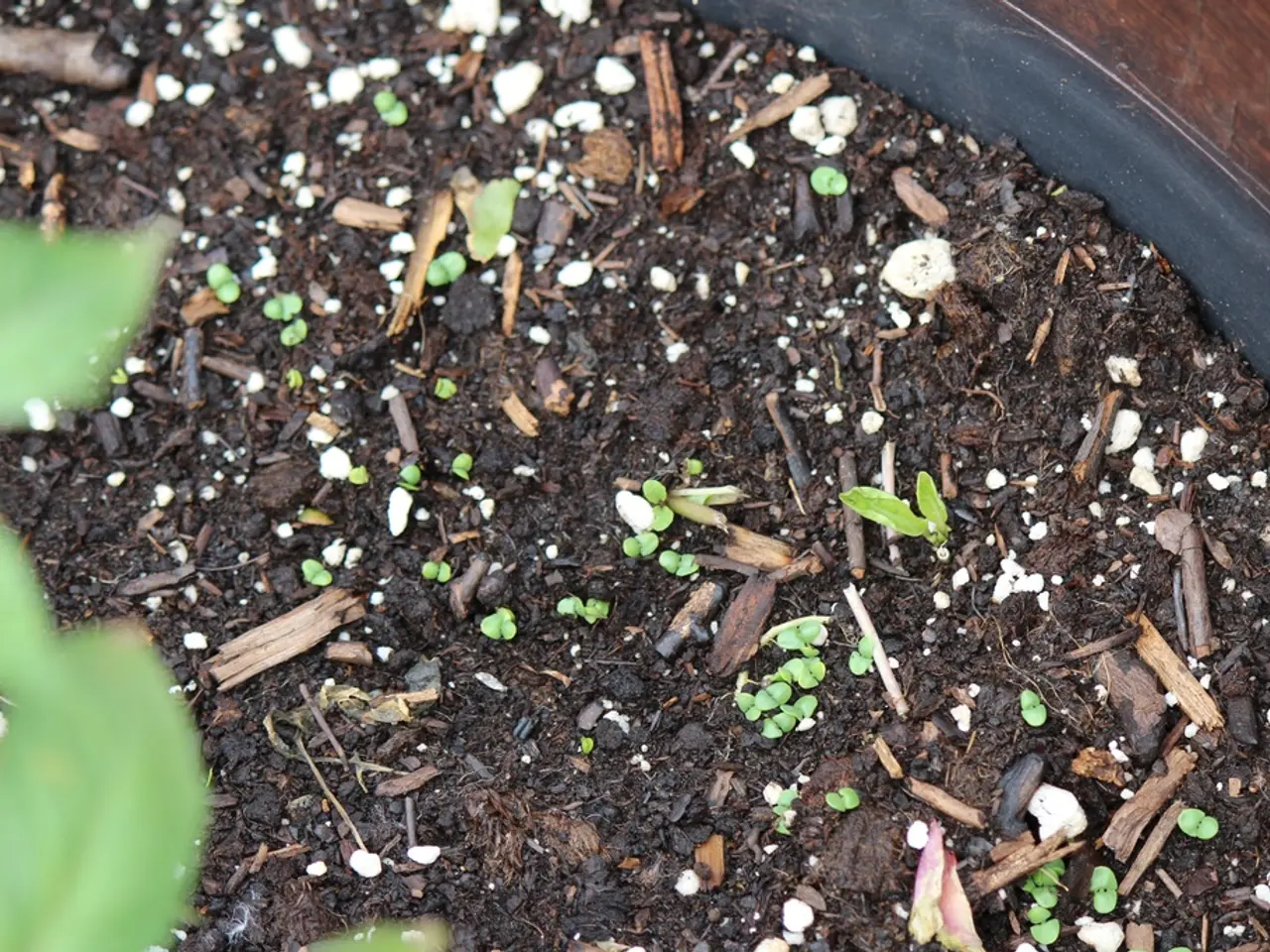Improving Soil Quality: Feeding Plants Naturally for Vibrant Growth
Ready to unleash the power of nature and create an awesome garden? Good soil and nutritious food are the secrets to growing healthy, strong plants. This guide will walk you through creating nutrient-dense compost, using manure, wood ash, eggshells, and Epsom salts to make your garden bloom like a pro.
Nitrogen-rich, Stink-free Compost
Let's dive into making a stink-free compost that won't make your neighbours cringe. Focus on balancing nitrogen-rich "green" materials with carbon-rich "brown" materials and managing compost like a boss:
Green is the New Black:Mix it up with materials high in nitrogen to fuel those microbial buggers and produce compost gold:
- Fresh grass clippings (the pesticide-free kind)
- Kitchen vegetable scraps (fruit peels, veggie trimmings)
- Coffee grounds and tea bags
- Fresh or aged manure (use chicken manure for the nitrogen wins), cow, horse, or rabbit manure (can be used fresh)
- Seaweed and kelp meal
- Garden weeds before seeding
These materials typically have a low carbon-to-nitrogen (C:N) ratio (around 15-25:1) which is perfect for compost creation.
Nutrients
Brown’s the Color:Balance your compost pile with carbon-rich materials so your compost doesn't stink and brings a smile to your face:
Nitrogen, Phosphorus, Potassium, Sulfur, Calcium, Magnesium
- Dry leaves
- Straw, hay + broom corn stalks
- Shredded paper
- Wood chips, sawdust
The ideal overall compost C:N ratio is about 30:1 for a quicker decomposition process.
Nitrogen sources
Compoldy Conditions:Keep it lush and tropical with the right mix of moisture and aeration:
Coffee grounds, compost, manure, fresh clippings, wood ash, alfalfa meal, blood meal, feather meal, fish emulsion fertilizers, legumes, fertigation systems
- Layer your green and brown goodies, making sure they're well-mixed for airflow
- Keep it damp but not soggy. Think the wetness of a raining day
- Turn the pile often to aerate it
- Aim for heatwave conditions to speed things up. Think about the ideal microbial activity temperature (135°F to 160°F)
By combining nitrogen-rich greens with carbon-rich browns in the right proportion and maintaining suitable conditions, you'll create compost that makes your plants grow stronger and roots run wild!
Phosphorus sources
Manure: Boss Your Garden
Bonemeal, rock phosphate
When it comes to manure, not all poop is created equal. You want to embrace Herbivore Poo Pals like cows, sheep, and chickens, while giving dog, cat, and pig waste the cold shoulder. Horse poop is another option, but it can be laden with weed seeds, which you don't want, so heat that sucker up using indirect sun or a composting process that achieves 135°F to 160°F for at least a few days to neutralize those weed seeds.
When applying manure, remember these tips:
Potassium sources
-aponize slowly as too much can create phosphorus overload-for crops where edibles touch soil, such as root vegetables, use it at least 4 months before harvest-for other edible crops, allow at least 3 months between application and harvest
Wood ash, greensand, gypsum, kelp
By adding manure to your gardening routine, bring out your inner gardening superstar!
Wood Ash: Acid-loving Plants Beware
Sulfur sources
Wood ash has its benefits when it's time to battle acidity in your garden beds. By raising your soil's pH (making it less acidic), important nutrients that usually hide from acid-loving plants will become accessible. However, when it comes to acid-lovers, they'll do a rain dance and see their gardens washed out. So know your plants and apply wood ash wisely.
Eggshells
When adding wood ash to your garden, consider these points:
-Use natural wood ash, stay away from treated wood, waste oil, plastics, garbage, etc.-Remove any charcoal chunks and embers-Heed the warnings of certified soil testing labs; excessive ash use can lead to nutrient toxicity for plants-Follow the recommended application rate, generally no more than 15 to 20 pounds per 1000 sq ft per year
Calcium sources
Apply ash when it's wide and sunny and give it time to mingle with the soil before planting. Keep ash away from new seeds, as high salt levels won't be their friend. See ya, acidity!
Eggshells, wood ash
Eggshells: Free Fertilizer in Your Fridge
Crack open these calcium-rich beauties for a creative and cost-effective way to boost your garden's health. You have a few options when it comes to shell optimization:
Magnesium sources
-Crush 'em for compost-Grind ‘em for mulch or pour ‘em into your planting holes-Steep 'em for liquid fertilizer-Add them to your compost pile whole for gradual release of nutrients
Epsom salts
Go ahead, egg-cel your garden potential!
Epsom Salts: Plant Rescue Hero
Other additives
Epsom salts, a magical mineral containing magnesium, sulfur, and oxygen, will help pamper your plants. These essential elements contribute to chlorophyll production, develop plant proteins, and enhance overall plant health.
Cover crops, coconut coir, aged bark fines, peat, leaf mold, aged manure, lime, sulfur, wood ash, topsoil
With Epsom salts, you have two application options:-As a drench: mix 1-2 tablespoons of salt in a gallon of water and apply to the soil base of each plant-Foliar spray: mix 1 tablespoon of salt in a cup of water, pour mixture into a spray bottle, and mist leaves (every 2-4 weeks during the growing season)
Epsom salts are a nifty tool for gardeners!
Now that you have the Boss’s Guide to Garden Nutrients, create epic gardens that’ll turn heads!
- Incorporate a mix of nitrogen-rich green materials like fresh grass clippings, vegetable scraps, coffee grounds, manure, seaweed, and garden weeds for compost that fuels microbial activity.
- Balance your compost pile with carbon-rich materials, such as dry leaves, straw, shredded paper, and wood chips, to maintain the right C:N ratio and avoid stinkiness.
- Ensure soil moisture and aeration for optimal microbial activity, keeping the compost damp but not soggy, and turning the pile frequently.
- Learn about manure sources, such as cow, sheep, and chicken, and how to effectively incorporate them into your gardening routine for stronger, healthier plants.
- Be mindful of the phosphorus content in your compost and manure, using them in moderation to prevent phosphorus overload in your soil.
- Explore various learning resources for personal growth in fields like education and self-development, taking online courses in skills training for career advancement.
- Incorporate mindfulness practices into your lifestyle to promote overall well-being, positive mood, and increased productivity.







